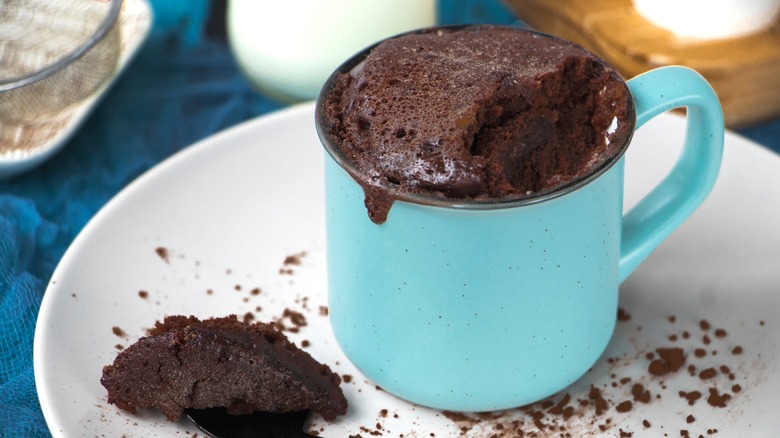The Best Microwave Power Level For Heating Up Dairy-Based Desserts
When the almighty microwave became a mainstay kitchen appliance, it delivered a new way to enjoy our favorite foods in a fraction of the usual wait time. With this powerful device comes the responsibility of understanding how to properly use it, especially when heating foods that require a little more finesse, like dairy-based desserts. And while it may seem basic, it's first useful to understand how a microwave actually works.
As it pertains to dairy-based desserts, you want to heat them entirely and evenly. When you think of your favorite custard, cheesecake, pudding, or even a sweet noodle kugel, slow and steady heat is optimal. To achieve this with microwave power, selecting P4 or P5 on your microwave (which is essentially medium-low to medium) will garner the best results. Similar to when you're cooking dairy on the stovetop, too much microwave heat — aka any power setting above medium — can burn or curdle the dairy in your dessert.
What if I'm only heating part of my dairy-based dessert?
Maybe your favorite dairy-based desserts are not served entirely hot and only need a partial warm-up or quick defrost. These different needs can also be achieved using the microwave, pending you adjust your power settings accordingly.
For example, if you want to quickly melt chocolate to create the perfect topper for a sundae or profiteroles, power level P4 (or 40% power) is your best option. Alternatively, if you're prepping a mug of decadent hot cocoa, you'll want to heat your dairy milk using the stronger P7, or medium-high setting. When using the P7 setting, it's important to keep an eye on your milk and stir it consistently (every 15 seconds) to prevent scalding.
There is also the scenario, especially in the case of ice cream straight from the freezer, when you need the microwave to defrost a dessert. In this instance, the less heat, the better. For ice cream, opt for 20% power, or the low P2 setting, which will address your defrosting issues without melting, burning, or otherwise destroying the flavor and composition. This is also the ideal setting for softening butter or cheese.
As with most kitchen devices, settings may vary and it's important to use your microwave properly, especially with a delicate substance like dairy. Always adjust your microwave in advance, adhere to the proper timing, and keep an eye on your dairy. From there, you can enjoy a delicious dessert in minutes, or even seconds.

